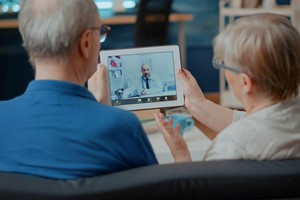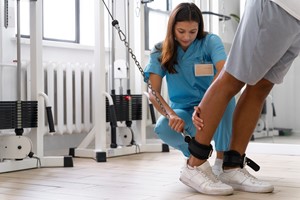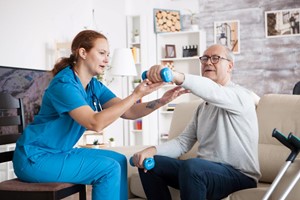In the aftermath of a stroke, individuals often confront formidable challenges, particularly in the restoration of lower body mobility and the pursuit of regained independence. These obstacles not only encompass physical limitations but also extend to mental well-being and overall quality of life. Recognizing this urgent need, researchers at the University of British Columbia Okanagan have embarked on a pioneering endeavor to redefine stroke rehabilitation through the innovative application of telerehabilitation.
Addressing Post-Stroke Recovery Challenges
Shortened inpatient stays and limited access to continued stroke rehabilitation services present significant hurdles for lower extremity recovery post-stroke. Patients grapple with issues such as balance, stability, and gait coordination, which profoundly impact their ability to engage in daily activities.
The Feasibility of Telerehabilitation Programs
Under the guidance of Dr. Brodie Sakakibara, a national team has conducted a comprehensive evaluation of the feasibility of a telerehabilitation program aimed at facilitating lower extremity recovery post-stroke. This program endeavors to offer accessible rehabilitation irrespective of geographic location, leveraging both technology and clinical expertise.
Study Design and Outcomes
Engaging over 32 stroke survivors in eight telerehabilitation sessions conducted via videoconference, the program focused on standardized exercises and self-management supports to enhance lower body mobility. The outcomes demonstrated notable improvements in mobility, strength, and progress toward rehabilitation goals, with participants also acquiring essential self-management skills to sustain achievements beyond the program's duration.
Therapeutic Benefits of Virtual Rehabilitation
Virtual rehabilitation programs, like the one pioneered by UBC Okanagan researchers, hold the promise of heightened accessibility, particularly for individuals residing in rural and remote areas. Nonetheless, sustaining therapeutic benefits post-program necessitates ongoing therapy to maintain progress achieved during the intervention.
Incorporating Self-Management Skills
Recognizing the importance of long-term sustainability, post-stroke rehabilitation interventions must integrate self-management skills. Empowering participants to continue exercising and maintain benefits after program completion is paramount for sustained progress.
Enhancing the Continuum of Care
By embracing self-management programs, post-stroke rehabilitation endeavors aspire to enhance health outcomes by facilitating individuals' adaptation to their circumstances. This approach, when coupled with virtual rehabilitation programs, has the potential to enrich the continuum of care and elevate the overall quality of life for stroke survivors transitioning back into their communities.
In conclusion, the innovative fusion of technology and clinical expertise in telerehabilitation represents a beacon of hope for stroke survivors, promising a future marked by progress, resilience, and restored vitality. As research in this domain advances, the transformative potential of virtual rehabilitation stands poised to revolutionize stroke care, transcending geographical barriers and fostering a landscape defined by inclusivity and empowerment.
The Health Site










